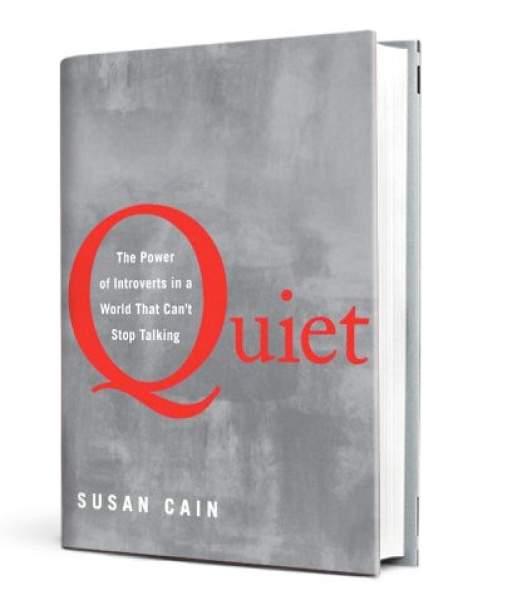
Last year, I was visiting an all-girls independent school on the East Coast when a mom came up to ask me about her daughter, who was an excellent student and introverted. Many times, the school day – with all it’s noises, interactions, decisions, and collaborations – left her exhausted and she spent most evenings and weekends recharging from all the non-stop activity. The mom was concerned about her daughter’s lack of extracurricular activities and dearth of social opportunities outside of school. Her daughter worked hard and was well-liked, but thrived best when she had adequate rest and quiet time – as a result, she didn’t particularly enjoy having plans with friends or activities scheduled during her personal time.
As we gear up for back-to-school, there’s one topic that barely received enough press in the past: how introverted students manage classrooms and navigate classroom participation. Ever since Susan Cain’s runaway bestseller, Quiet: The Power of Introverts in a World that Can’t Stop Talking. It was on the website for her newly-formed for-profit company, Quiet Revolution, I found some great articles on helping your child navigate the world as an introvert, including this piece on Class Participation by Jessica Lahey (whose great book, The Gift of Failure, was recently released). It’s easy to overlook how class participation grades might be tougher for students who are normally quieter learners – they may be more apt to soak in learning when they are able to process quietly. At the same time, collaborative technology may offer a gift of a solution, as students who were once relegated to raising hands and speaking in class as their sole form of participation are now able to collaborate online and post their thoughts in a virtual space.

I am an ambivert, which means I have characteristics of both introverts and extroverts. Parties and events don’t necessarily drain me, though I do prefer one-on-one or small group dinners to larger events. I need quiet space to think, reflect, and write. I’ve never enjoyed large crowds, so rock concerts or large stadiums are not necessarily my thing – though I am not one to miss a good college basketball game, especially when I have great seats. I’ve long enjoyed solo vacations as a way to reflect, and see that as part of my creative process. I think it’s true for most people that a little bit of quiet can do a lot of good, but we often overlook the importance of mindful silence in a world that, as Susan Cain implores, can’t stop talking.
Here are a few of my back-to-school suggestions for students who are introverts:
1. Become your own best advocate. I encourage students to talk to the teacher at the beginning of the year, and work to find solutions, particularly if participation is an active part of the evaluation process (which is often the case). For middle school and high school students, it’s more helpful for students to do this themselves than for parents to write a long email or request a conference, because part of growing up is becoming a good advocate for your needs and learning style.
2. Find activities that suit your personality. Introverted students (and their parents!) are sometimes worried about how the college admissions process will judge their activities, especially if they don’t seem to be as active as their peers (after all, there is a certain amount of rest and recharge needed). I like to dispel those myths by suggesting that their are activities for everyone, and there’s not one prescriptive way to be active. Some activities involve peaceful solitude – one student I had loved to bake fondant cakes (they were amazing!) and she included a sampling of them as part of her college admissions process. They were truly works of art, and her personal statement gave a window into her personality that might have otherwise been overlooked.
3. Create ample opportunities to rest and recharge – even during the school day. The school day can be long (!) and if you come home feeling exhausted every afternoon, perhaps think of ways you could have mini oasis points throughout the day. An oasis point is like a mini-vacation, so think of a way to get a few minutes to yourself to re-group. Maybe sit alone for five minutes during break and have a cup of tea or warm water, or take three minutes and work on mindful breathing. At every school there are quiet spots where you can retreat – start this school year by identifying a few for yourself.
4. Accept that your social needs may be different than others, and realize that an over-consumption of social media can promote F.O.M.O. and burnout. You know your needs better than anyone, and it’s likely you thrive best when you have adequately recharged on evenings and weekends. In middle school and high school, that can be difficult because there seems to be a non-stop plethora of activities either IRL or online. Scrolling through photos might give you a pang of F.O.M.O. (fear of missing out) when in reality, you probably just needed to stay home and relax. And, that’s perfectly okay – actually it’s better than okay. Recognizing and addressing your own needs is awesome.
5. Take time to develop friendships with friends who truly understand you. This can seem difficult, particularly when you are at a new school and everyone is trying to forge friendships and meet people all the time – which, quite frankly, can be draining. Take a step back, and realize it’s a marathon, not a sprint. True friendships are generally forged over time and shared experiences, so engage in activities that energize you and, to borrow a phrase from Susan Cain’s work, find your tribe. (Small side note: This research on why middle school friendships don’t normally last is fascinating – and makes sense to every person who has ever been in middle school).


Ana,
Once again, your blog hits home. I am so pleased to see you address the unique needs of introverted students in our extroverterted society and educational system. So many times I have heard that my student needs to be brought out of their shell. Perhaps. But perhaps their shell allows them the quiet to observe, think, and absorb.
As long as introverted students have healthy supportive relationships with peers and have alternative means for expressing themselves in the educational environment, they should be supported in keeping their shells healthy and intact. They should not be constantly pushed to engage in more extroverted ways both socially and in the classroom. It truly becomes in matter of mental and emotional health all too quickly.
This is yet another nuance to the discussion of teenage mental health in the educational environment of Silicon Valley.
Thank you for the comment about having your student talk to teachers at the beginning of the school year. I am looking for a place for my daughter to go to a school where she will be able to thrive. I bet we could find a great place to help her come out of her shell!